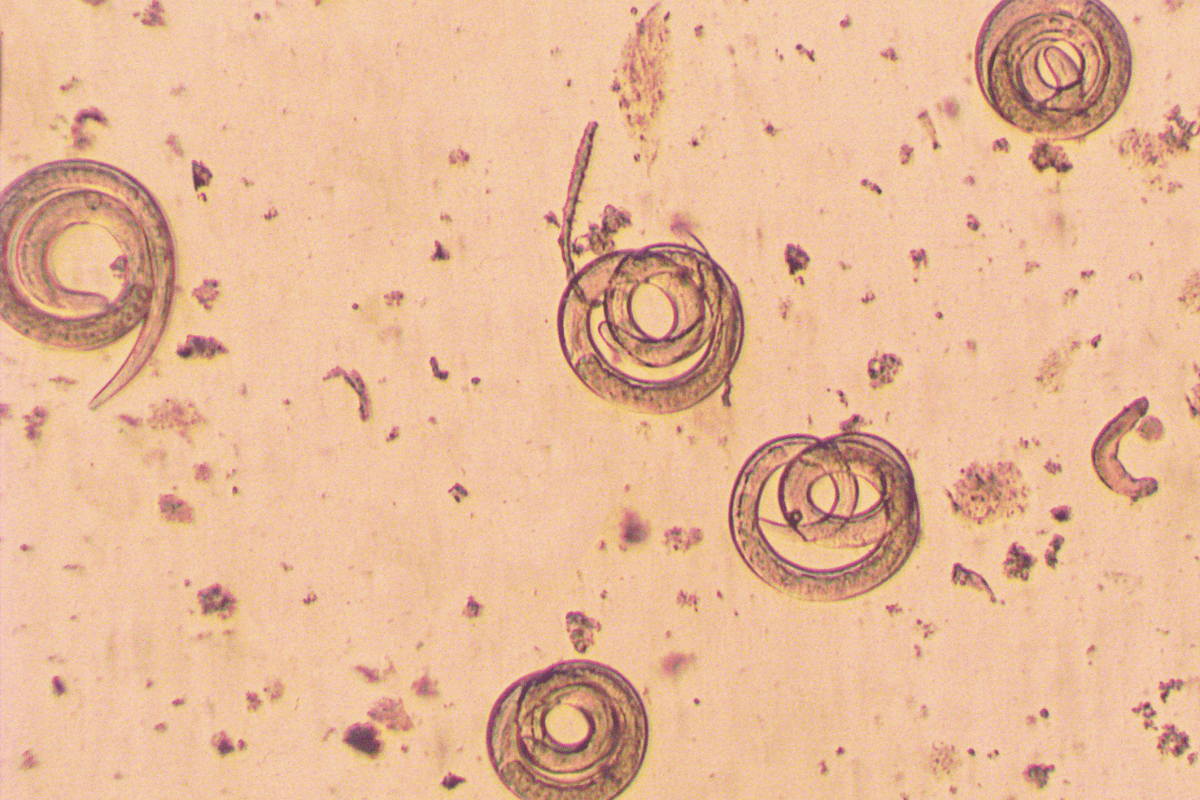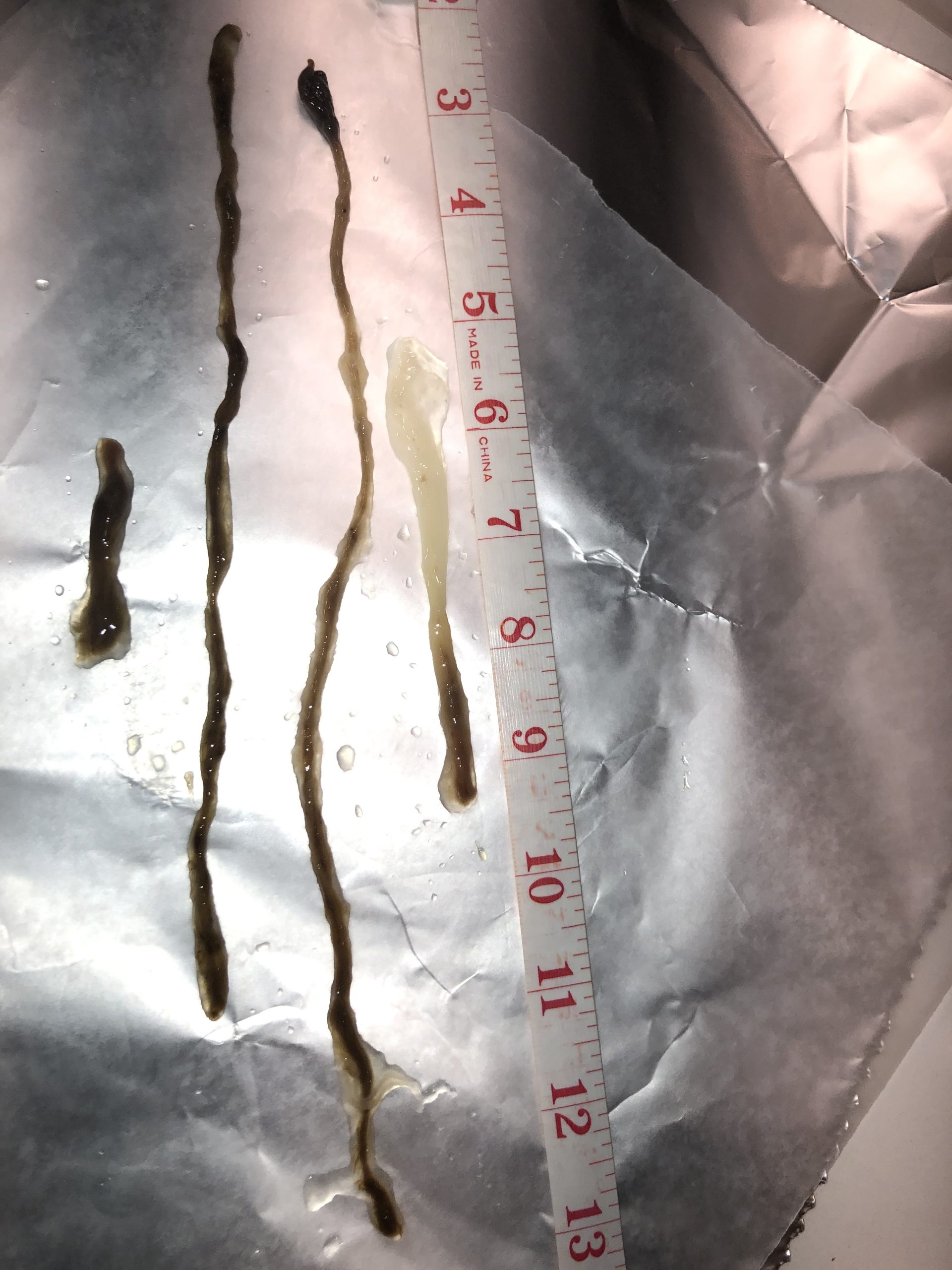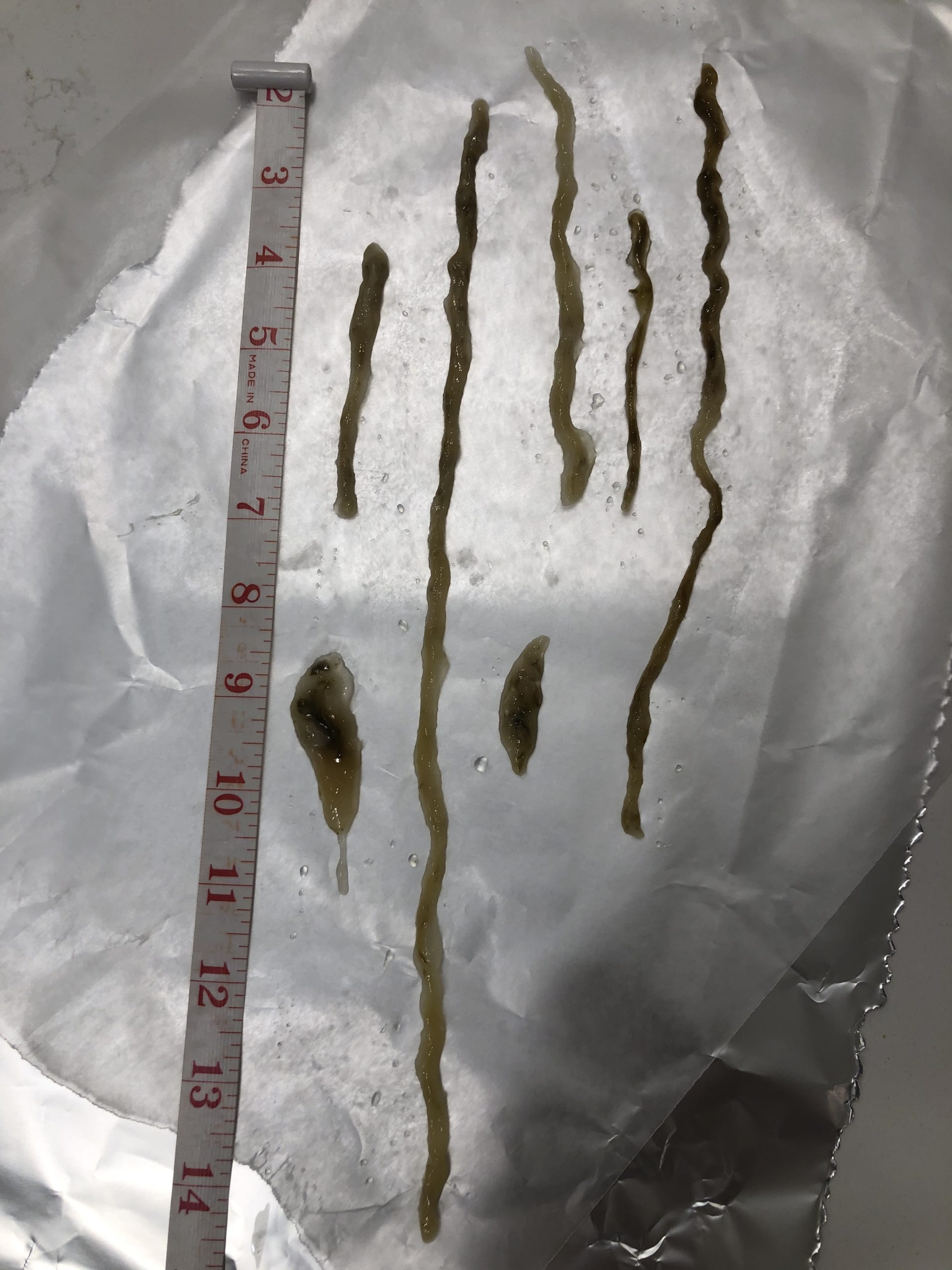
This post shares the experiences and insights of one of our students who is treating parasites in her recovery from multiple sclerosis – how the parasites are being treated, pictures of parasites that she passed and the truly amazing symptom improvements that she felt following treatment are also discussed.
The following information is solely for educational purposes and is not intended to replace the necessary measures of a healthcare provider. It is designed to help you play an active role in your healthcare while working with healthcare professionals, so that you can reach your health goals.
What is a Parasite?
A parasite is an organism that lives on or in us, gets its food from us and causes us harm.
Examples of Parasites:
- Bacteria – Borrelia, Bartonella, clostridia, chlamydia pneumonia, etc.
- Fungi – aspergillus, Candida, etc.
- Protists – Giardia, Babesia, Plasmodium (malaria), Toxoplasma, etc.
- Worms – round worms, tapeworms and flatworms, etc.
- Ectoparasites – flees, lice, etc.
How do we Become Infected with Parasites?
Parasites are present in all countries, not just in underdeveloped ones. They are present in our soil, water, animals, humans and our food – animal protein and on fruits and vegetables. They can also be passed from one person to another on many surfaces, such as public door handles and shopping carts. Protists and worms can be transmitted sexually.[i] We can also become infected with parasites if our food is prepared by someone who has parasites and doesn’t wash their hands well enough. We can’t avoid being exposed to parasites.
This post will focus on flukes and roundworms as they are large enough to see with the naked eye. Bacteria, protists and fungi are very small and can only be seen under a microscope.
Flukes
Flukes are flat worms. They are transmitted through food, water, animals (dogs, cats, sheep, cattle, deer, goats, etc.) and humans. They can infect our blood, lungs, gallbladder and bile duct, liver, bladder and intestines. Depending on which type of fluke and where it lives in the human body, symptoms can include chest pain, fever, nausea, abdominal pain, diarrhea, constipation, alternating diarrhea and constipation, abdominal obstruction, cough, loss of appetite, anemia, toxemia and allergic reactions. Flukes infect us with their parasites. For example, it is known that flukes carry the bacteria rickettsia which causes Rocky Mountain spotted fever, Q fever, murine typhus, sylvatic typhus, human monocytic ehrlichiosis, human granulocytic ehrlichiosis, and rickettsialpox.[ii]
Symptoms of toxemia caused by flukes can include: recurrent headaches, abdominal pain, fatigue, muscle pain, stiffness and or spasms, difficulty breathing or shortness of breath, fatigue (the biggest and most common symptom), allergic reactions, enlarged lymph nodes, low-grade fever, urinary frequency, bladder pain, frequently sick with the common cold or flu, increased heart rate, hives, welts, difficulty concentrating and pale colored inner eyelid,[iii] visual changes, nausea, and swelling of the hands, feet, or face.[iv]
Liver Flukes
Liver flukes infect the bile ducts, gallbladder and liver. Their size ranges from 8.0 to 15.0 mm long, 1.5 to 4.0 mm wide and 1.0 mm thick.[v]
Liver fluke symptoms include – fever, chills, itching, nausea, swollen liver, extreme abdominal pain, jaundice and anemia, stone formation and feeling unwell.
Treatments for liver flukes include –praziquantel, triclabendazole, but nitazoxanide and albendazole can also be helpful.
Intestinal Flukes
Adult intestinal flukes can grow to about 7.5 cm or 3 inches long.
Symptoms include abdominal pain, chronic diarrhea or constipation, alternating diarrhea and constipation, abdominal bloating, anemia, toxemia. Worm toxins can cause allergic reactions and can lead to intestinal obstruction and eventually death.
Treatment – praziquantel is the main treatment, but others could include pyrantel pamoate, albendazole, thiabendazole, mebendazole and levamisole.
Roundworms
Roundworms are whitish or cream colored, round, long and narrow in shape. The smallest roundworms are about 40-100 mm long, while larger roundworms average about 20-49 cm in length and 2-6mm wide.[vi] They reproduce very quickly and female roundworms can lay more than 200,000 eggs in one day.[vii]
Humans and most animals can become infected with roundworms. Roundworms eggs enter the body through the mouth and quickly hatch into larvae and then infect the liver, lungs, intestines and other organs. They can cause damage to tissue including our nerves. Roundworm eggs and larvae can survive for weeks and even years in contaminated soil in parks, playgrounds, and yards. Hookworm larvae can penetrate the skin when someone is sitting or walking on contaminated soil or sand with bare feet.[viii]
Depending on the type of roundworm and where it lives in the body, symptoms may include – fatigue, fever, dry cough or coughing up blood, shortness of breath, abdominal pain, muscle pain, stiffness, spasms and or weakness, nausea, diarrhea, constipation, blood in the stool, weight loss or failure to grow, worm present in vomit or stool, watery or itchy eyes, blurred vision, pink eye, sensitivity to light, vision loss, some people may see the worm move across their eyes, [ix] swelling and scarring, especially of the legs and groin, infections, itchy rash, sores on the skin, swollen lymph nodes, loss of pigmentation of the skin and anemia.
Case Study of a Student Following the Live Disease Free Plan While Working with Her Practitioner
Her Health History
-
- Female – healthy before diagnosis, but had a history of stomach pain and constipation
- MS diagnosis
- First MS symptoms – fatigue, brain fog, optic neuritis, some weakness, tingling, stiffness, weakness and muscle cramps or spasms in legs, tinnitus, low grade headache, insomnia, fatigue
- Completed the Prep Phase of the Live Disease Free Program
- Energy tested well for – albendazole, ivermectin, nitazoxanide, praziquantel and pyrantel pamoate
- She was recommended to start with praziquantel, then pyrantel pamoate, then others
- Include chlorine dioxide (CD) enemas as needed
She took the full dose of pyrantel pamoate one day and the following morning did a CD enema and passed this:

Symptoms improvements included – Increased strength and energy, less stomach pain, greater sense of wellbeing.
Over the next few days she worked up to full dose of praziquantel, pyrantel pamoate and nitazoxanide – as prescribed by her practitioner. She felt a bit nauseous during the day but it was manageable.
With the next CD enema she passed the following:

Finally, she added in albendazole with the first 3 prescribed medications and passed the following the next day:

It’s truly amazing the amount of parasites she passed within just a few days of treating. Hopefully the images will help practitioners better understand the level of parasitic infestation that their patients are suffering from.
She has just started treating but the fact that she had significant symptom improvement so quickly is a very good sign that she’s using effective treatments.
There are Real Solutions for MS Today!
To restore health, we must focus on treating the cause of inflammation, which are parasites. First, identify the enemy (parasites), then support the body and treat the parasites while following a holistic approach. When parasitic infections are treated effectively, we can overcome inflammation or disease.
If you’re frustrated with the fact that our standard of care STILL doesn’t offer a real solution for treating MS, then click on the link below to watch Pam Bartha’s free masterclass training and discover REAL solutions that have allow Pam and many others to live free from MS symptoms.
CLICK Here to watch Pam’s masterclass training
Or take the Health Blocker Quiz to see if you could have parasite infections
References:
[i] https://pubmed.ncbi.nlm.nih.gov/2011632/
[ii] https://www.ncbi.nlm.nih.gov/books/NBK7624/
[iii] https://www.sciencedirect.com/topics/medicine-and-dentistry/toxemia
[iv] https://www.osmosis.org/answers/toxemia
[v] https://www.ncbi.nlm.nih.gov/pmc/articles/PMC3088844/
[vi] https://animaldiversity.org/accounts/Ascaris_lumbricoides/#:~:text=Physical%20Description,2%2D4%20mm%20in%20diameter.
[vii] https://www.stanfordchildrens.org/en/topic/default?id=roundworm-infections-in-children–160-54#:~:text=Roundworms%20can%20live%20inside%20the,than%20200%2C000%20eggs%20a%20day.
[viii] https://www.cdc.gov/parasites/resources/web/roundworms_hookworms.html
[ix] https://www.mountsinai.org/health-library/condition/roundworms

Clinically diagnosed with multiple sclerosis at the age of 28, Pam chose an alternative approach to recovery. Now decades later and still symptom free, she coaches others on how to treat the root cause of chronic disease, using a holistic approach. She can teach you how, too.
Pam is the author of Become a Wellness Champion and founder of Live Disease Free. She is a wellness expert, coach and speaker.
The Live Disease Free Academy has helped hundreds of Wellness Champions in over 15 countries take charge of their health and experience profound improvements in their life.

